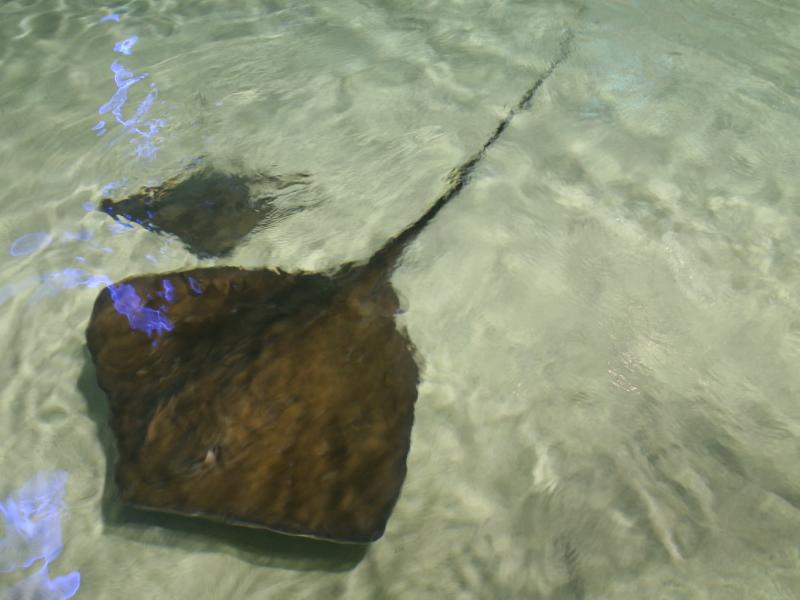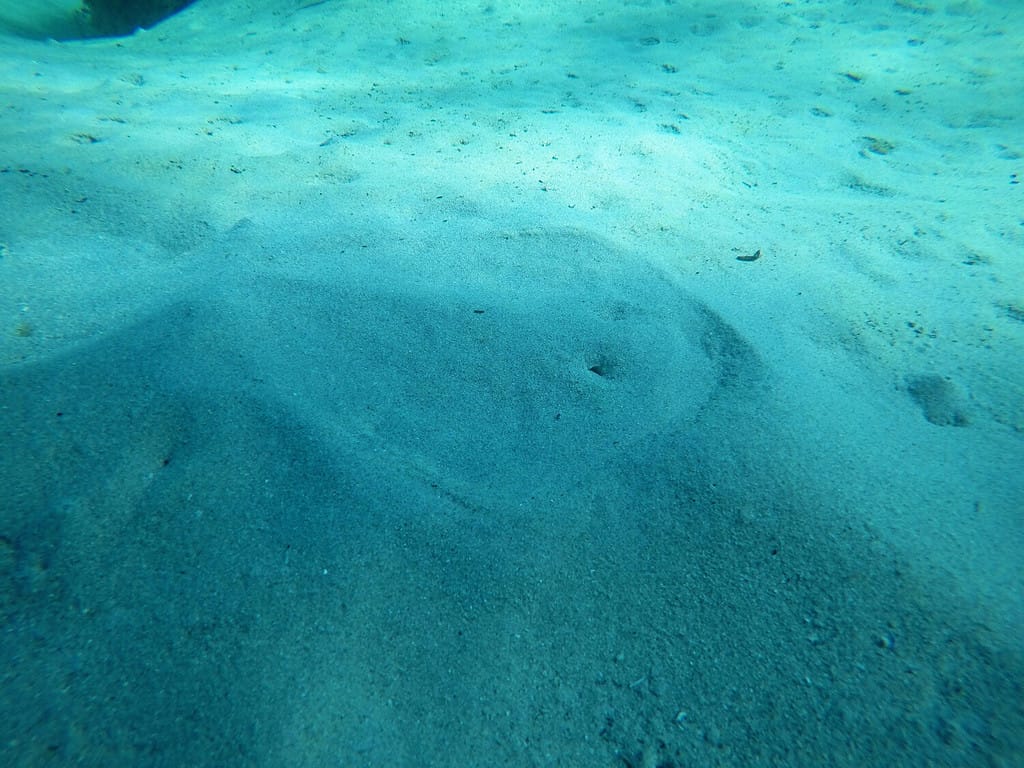Stingrays are animals that typically hang out in the sand below the surface. Ultimately, they are mainly harmless as they will just sit there and not do anything. But stingrays can still be dangerous. Hence, it’s all in the name “sting.”
Today, I will tell you the story of how I survived four stingray attacks, what I did to treat each sting, and what I should have done better.

Stingrays are usually harmless unless you step on them. They will react defensively by whipping their tail, which has a very pointed barb that releases venom.
©iliuta goean/Shutterstock.com
The First Sting Ray Attack
Before the first attack happened, I had seen a sign a few months prior that said, “Warning: Stingrays Present, Shuffle Your Feet.” It was 2011, and I had been surfing for two years at Bolsa Chica State Beach in California. But I had never seen a stingray or been stung. Therefore, I disregarded the sign. It proved to be a mistake.
I was plodding in the water with my surfboard, attempting to remember to shuffle. But you don’t always remember. Then, I felt something on my foot. It felt like a prick. Next, I started dragging my feet, along with my board, toward the shoreline. As I got to the sand, the pain increased. Sadly, it kept festering and worsening. I limped toward the lifeguard and told him I believed a stingray had stung me. Next, I collapsed to the sand.
I did not lose consciousness. However, the pain coursed through my feet, and the venom made it worse. The lifeguard summoned some assistance and then brought me some scorching hot water. Next, I put my right foot through the hot water for one hour. Aside from a small infection, I fully recovered within a week.
The Second Attack
The second attack happened two years later. Thankfully, this attack was not nearly as severe as the first attack. It was mainly because I was wearing special surf booties at the time, and the stingray brushed the bottom of my left foot. However, I disregarded it because it was so tiny, and it cost me. The sting swelled up and became infected. Unfortunately, stingray attacks can be much worse if you treat them incorrectly. I should have received proper medical care. Instead, I disregarded it, and it swelled up.

Stingray stings can release excruciating pain that can last for up to 48 hours if not treated correctly.
The Third Attack
The third stingray attack was the least potent of all my injuries, and it occurred in 2016. Thankfully, this stingray barely brushed the side of my right foot. I immediately went to the doctor and treated it because I learned my lesson from the last time. Regardless, I limped for a week.
The Fourth and Final Stingray Attack
The fourth stingray attack took place in 2018 and was the most painful I have ever experienced in my life. Initially, I was catching an amazing wave that seemed to last forever. At the very end of the set, I came down from the board and landed my left foot in the sand. Then, I felt the most searing stab I ever felt. A stingray swiped at me with ferocity and vigor. My face fell, the terror rising from the realization of what happened. As I got to the shore, the stiffness from the pain dragged my leg down, and I collapsed on the sand.
The pain reverberated throughout my face, and my clenched fists pounded into the sound; I looked at the sting and saw it. Blood flowed down the left side of my foot, with a massive gash in it. Next, I managed to summon the strength to limp over to the lifeguard and tell him. They rushed to my aid and, once again, secured some boiling hot water for me. After an hour, the bleeding had stopped, and I informed the lifeguard I could drive myself to urgent care.
I waited in urgent care for about an hour before the doctor finally saw me. Then, he prescribed me some antibiotics because of how fast and far the venom coursed through my foot. I recovered after this fourth, and I still wear surf booties every time I surf at that beach, regardless of how hot it is.
The Lesson
Always shuffle your feet. Additionally, you should always be careful of how you land. Remember to check your beach areas to understand how many stingrays, if any, are in the area. Unfortunately, most beaches do not warn beachgoers of stingrays present until they start stinging people. I came to the realization that Bolsa Chica State Beach, Huntington Beach, and Seal Beach had stingrays yearly and to always be careful when going in the water.

Stingrays like to stay buried in the sand, so shuffling your feet must alert them to your prescience in the water.
©Monsterchic16/Shutterstock.com
The photo featured at the top of this post is © BlackFarm/Shutterstock.com
Thank you for reading! Have some feedback for us? Contact the AZ Animals editorial team.







